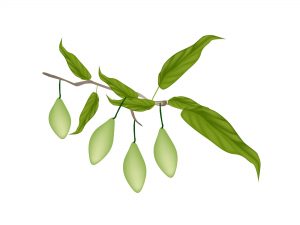
Haritaki Herb and it uses
The Haritaki Herb is derived from the the tree Terminalia Chebula, which grows in India, Nepal, Thailand and many other countries in South East Asia. The herb is listed as the most important herb in Ayurveda in the ancient texts, and in Tibetan Buddhism it is listed as essential to all healing. The medicine Buddha, one of the holiest of images, holds Haritaki in both hands as his healing gift to the world.
There have been a number of studies of its herbal properties, and below I am listing some of the most important ones.
Wikipedia has a very useful report on Haritaki. You can find it at this link
Another very useful link that investigates the herbal benefits of the Haritaki herb is from Indian Research at this link
This is what that report has to say:
Therapeutic attributes
Ayurvedic classics have vividly described the therapeutic effect of the different varieties of Haritaki. With regard to the effect, all the classics are not unanimous and the various effects stated are: Vijaya is given more importance as it is useful in all kinds of diseases, for both purificatory measures and preparation of malt (Avaleha)-based products, Rohini is useful in consumption and wounds, Putana is useful for external application, the Amrita variety is useful as a purgative, Abhaya is for eye disease, Jeevanti is medicine for oleation therapy, Kalika is effective in removing the foul smell of the ulcer, and Chetaki for purgation.
In Tibetan literature, the different parts of the Haritaki tree has been used for a special therapeutic purpose. The roots clear the diseases of the bone, the stem clears muscle diseases, the bark is useful for skin diseases, the branches are useful in vascular disorders, leaves are useful for visceral diseases, and the fruit for vital organs, including heart diseases.[5]
Here is a link to buy theHaritak Herb
